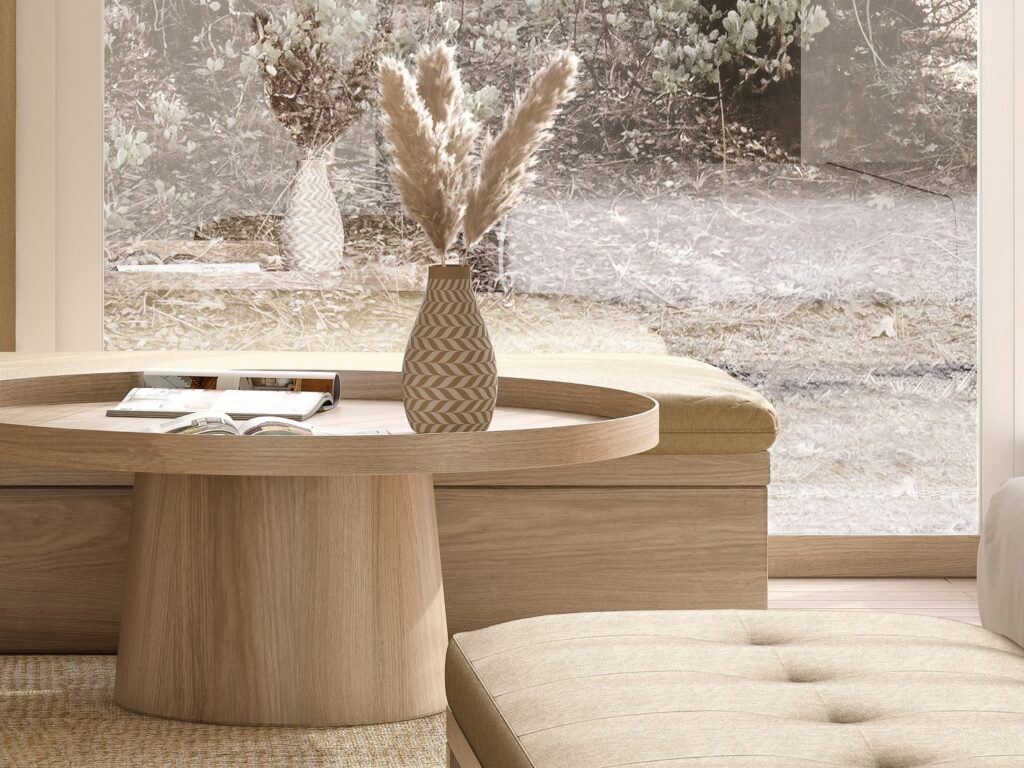Answering your questions on flat weave vs textured décor fabrics
Specifying different materials for interior décor projects is all about looking at details…and it’s often the smallest details that make the biggest difference to the finished project.
Do you need the tactile look and visual appeal of textured fabrics, or are you leaning more towards the discreet simplicity of fabrics with a flatter weave?
Or are you a little bit confused as to the terms?
Perhaps you might be thinking that a fabric’s finished texture and weave contribute to cleanability, and that you can only specify fabrics with qualities that match your assumptions.
Today we dip into the impact that these two key fabric characteristics can make to an interior. We’re looking at textured fabrics and flatter woven fabrics, and the pros, cons, and end-uses of each.
What is a ‘flat woven’ fabric?
A flat weave is a fabric without texture or an obvious surface relief. This doesn’t mean the fabric is plain and boring. The variety of flat weave fabrics available is vast, stretching from luxurious, glamorous satins, to dimensional and elegant taffetas, to more natural and casual items such as a brushed cotton with its soft, napped texture, or homely linen.
Flatwoven fabrics have a subtle touch in your hands and elevate a space with their understated visual elegance.
There is an exciting variety of upholstery fabrics with a flatter weave in our collections. We’ve chosen some examples from our ranges throughout this article to show the interesting differences that flatter woven fabrics have.




What is a ‘textured’ fabric?
Textured fabrics have an irregular tactile look and touch. This gives them a more inviting, natural feel, that brings an interior down to earth with a relaxed, comfortable touch.
Texture can be added to a fabric in different ways:
- by using textured yarns - continuous filaments that give the end product fabric a special texture and appearance
- by combining different types of yarns to create texture
- by incorporating slub yarns
Explainer: Slub yarns have a very definite texture and often give an organic appearance as they mimic naturally occurring weaving irregularities such as cotton seeds in the yarn, or knots tied during the process of hand weaving.




Does a fabric’s texture or weave help keep it clean?
We are asked this question every so often. It makes sense to think that the weave of a fabric might help keeping it clean, especially a tight weave. When it comes to our fabric collections, a quick answer to this is: no, because our fabrics are engineered by our in-house design team to be easy to clean, no matter what weave, pile, design or end-use they have.
Flat weave fabrics can be used for upholstery and drapery
The ‘easy clean’ properties in our fabrics will last for their entire lifecycle, even after washing and/or prolonged use. Our flat weave fabrics are stain-resistant to ensure your peace of mind.
We frequently supplement our existing collections with new decorative fabrics, and trends and colours from the world around us are a key source of inspiration for our in-house design team.
Get in touch with us today to start your project.